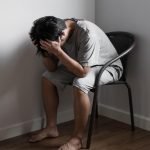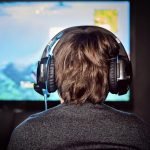Category: Blog

Tuning into the news can be a stressful and anxiety provoking experience, even in the best of times. During a pandemic, it can be downright frightening. If all of this negativity is wreaking havoc on your emotions, maybe it’s time to put your energy into building a Gratitude Practice.
Gratitude is the conscious decision to focus attention on the positive aspects of a situation and to notice feelings of joy, appreciation and thankfulness. It is a mindset that celebrates all of the wonderful, special, and unique gifts that life has to offer every day, no matter how simple.
When the world pressures us to pay attention to things that are hurtful, dangerous or missing in our lives, it can be especially challenging to maintain a mindset of gratitude and appreciation. This year especially has brought many unforeseen challenges to us all. Cultivating a mindset of gratitude can be accomplished even in these difficult times.
Why Gratitude?
Over the last several decades there have been numerous studies that have shown countless positive effects of practicing gratitude on our emotional, social and physical health. Practicing gratitude has been shown to improve mood, and help reduce depression, anxiety and irritability. Regular practitioners of gratitude are likely to feel happier, more peaceful and do kinder things for others.
Those who practice gratitude may have stronger social relationships. Couples who regularly express gratitude to each other feel their partners are more responsive to their needs and are overall more satisfied with their relationship. This extends to the workplace as well. When gratitude is expressed at work, employees improve their felt sense of self-worth and confidence, leading to an increase in trust between colleagues and more initiative to help one another out.
Physically, people who practice gratitude regularly have a host of positive effects including improved sleep, stronger immune systems, more consistent exercise habits, fewer physical symptoms and better progress towards achieving personal goals. This is especially important in the current climate.
The act of being grateful creates a chain reaction: the more positive things you notice and give thanks for, the better you feel. As you feel better, you are likely to seek out more positive experiences for which to be thankful.
Building a Gratitude Practice
There are many ways that you can begin to incorporate more gratitude into your life. Remember that when making any change in behavior, it is best to start small and gradually build over time.
If you are just starting out, try choosing one or two times per day that you devote to being grateful. You might consider as you are falling asleep each night to think of three things that happened during that day that you are thankful for. You could also try to think of the one thing you are most grateful for. Try to be as specific as possible. Instead of saying to yourself “I am grateful for my family” think …“I am grateful my husband cleaned up the kitchen after dinner.” Or “I am grateful that my son gave me a hug before bed.”
Once you have practiced that, you might want to upgrade to a Gratitude Journal. You can spend 5-10 minutes each night or first thing in the morning, reflecting on all of the things in your life you appreciate. The act of writing it down helps to solidify in your mind the memories and experiences.
Consider incorporating your family into the practice. When sitting down to meals, ask your family members one thing that happened today that they each feel grateful for. We tend to do this before Thanksgiving dinner, but we can also do this as we sit down with our take-out pizza. Before falling asleep, tell your partner something about him or her that you value and appreciate.
Lastly, find opportunities in your day to express your appreciation for others. Consider sending an email to a colleague when you overhear a positive comment or compliment about them. A text with a thank you or heart emoji only takes five seconds but can brighten someone’s morning.
Remember that gratitude is not the same as denial or wearing rose colored glasses. It does not dismiss or deny the very real things that are not ‘ok’ in our society. Instead, gratitude helps us to collectively notice and appreciate the beauty, the kindness, the love that surrounds us every day. Sharing our gratitude allows us to work together to find solutions and to maintain hope in the face of adversity.
Practicing a grateful mindset can be challenging at first, especially when there are so many messages of negativity around us. Over time and with intention, building your gratitude practice can bring just a little more peace and joy to your world.

By Laurie Little, PsyD, Director of Therapeutic Services, Residential, Lindner Center of HOPE

 Nicole Bosse, PsyD
Nicole Bosse, PsyD






 Danielle J. Johnson, MD, FAPA Lindner Center of HOPE, Chief Medical Officer
Danielle J. Johnson, MD, FAPA Lindner Center of HOPE, Chief Medical Officer
 By Allison Mecca, PsyD
By Allison Mecca, PsyD


